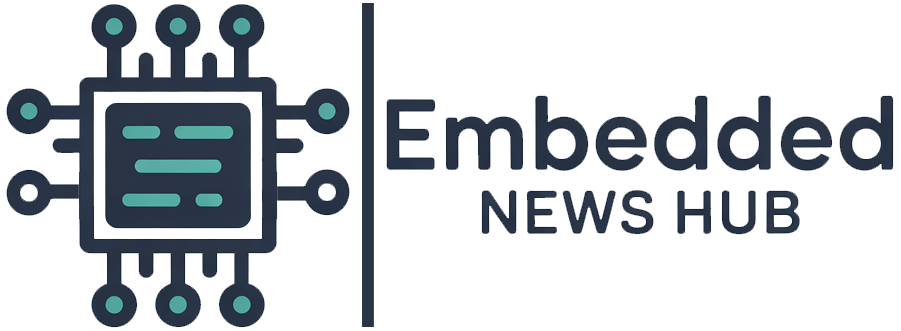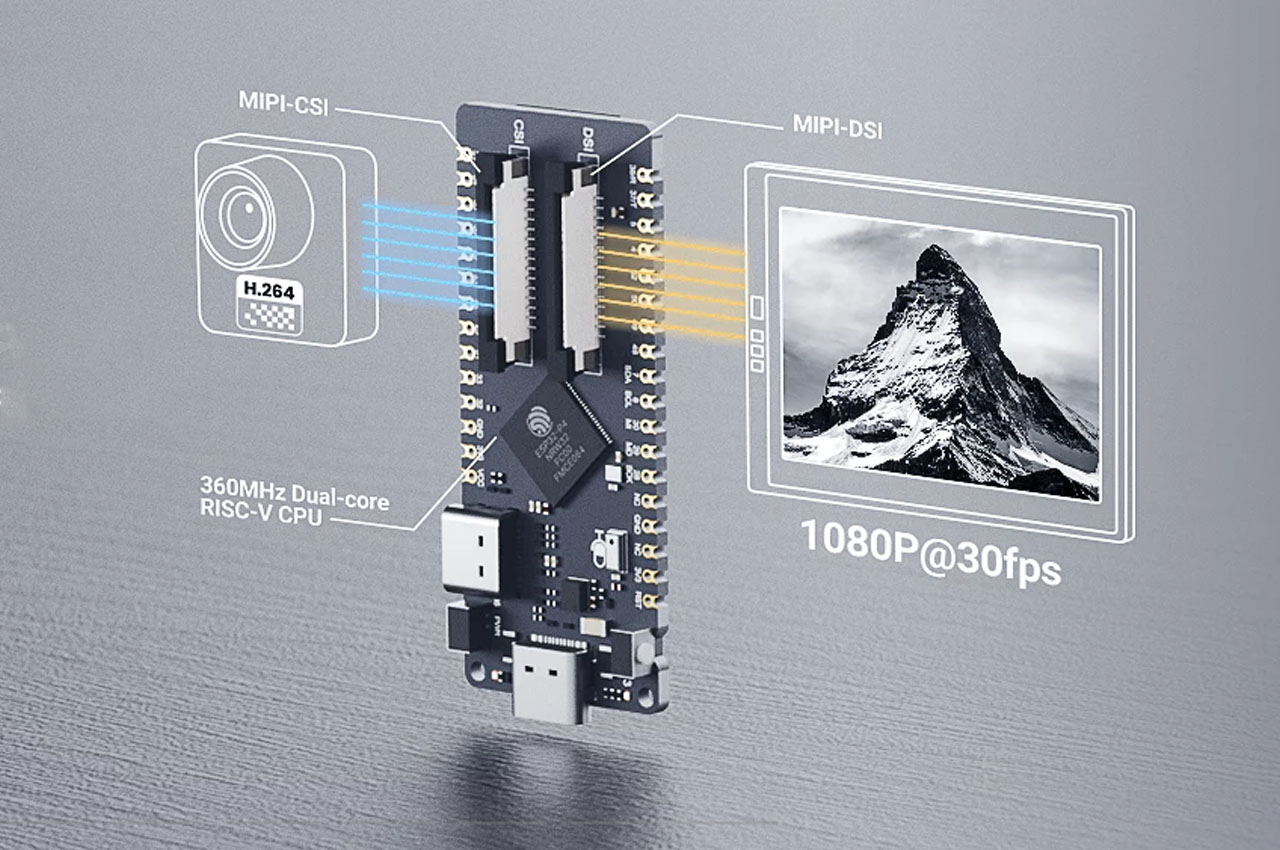The FireBeetle 2 ESP32-P4 AI Development Kit from DFRobot is a compact yet powerful edge AI and multimedia prototyping platform, built around the ESP32-P4 processor. Designed for developers aiming to bring AI-powered vision and interactive applications to life, this kit delivers real-time 1080p video processing with advanced wireless connectivity, all at an affordable price point of $13.90.
At its core, there is the ESP32-P4, which is a microcontroller with two processing units that work at 360 MHz. It has a built-in single-precision floating-point unit and special features for artificial intelligence. One of its most impressive parts is the high-quality media engine that can handle H.264 video encoding at 1080p with 30 frames per second, using connections like MIPI-CSI/DSI and other parallel interfaces to easily connect with cameras and displays. It also comes with image signal processing, pixel-parallel speeding up, and support for 2D-DMA, which helps in running advanced graphical user interfaces, touch controls, and voice recognition.
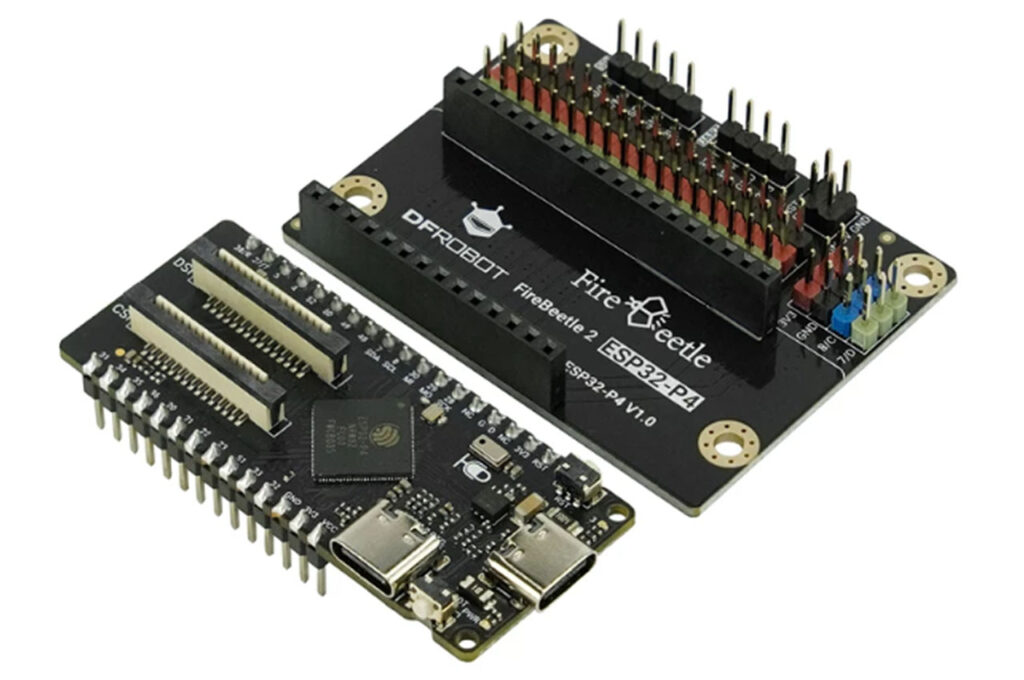
The ESP32-C6 co-processor assists the main processor and is responsible for the Wi-Fi 6.0 (802.11ax) and Bluetooth 5.0 (LE). This offloading greatly boosts stability and performance. Wi-Fi 6 provides low-latency, high-throughput streaming perfect for AI cameras and smart doorbells. Bluetooth 5 allows for easy device combination and control in robotics and interactive uses.
An I/O expansion board included in the kit helps to simplify hardware installation. This breakout enables plug-and-play connectivity for devices, including I2C gyroscopes, motor controllers, LiDAR sensors, and several peripherals, without untidy settings by streamlining wiring and power management.
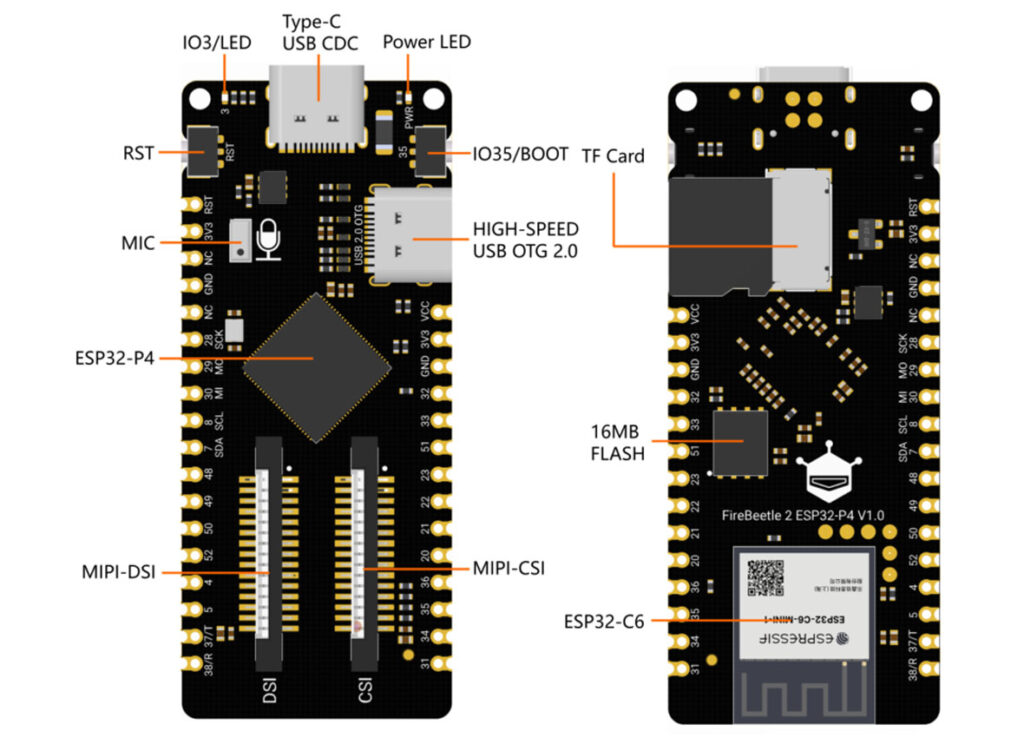
FireBeetle 2 ESP32-P4 AI Development Kit Specifications:
- SoC: Espressif ESP32-P4 dual-core RISC-V @ up to 360 MHz with single-precision FPU, DSP extensions, and AI instructions
- Co-processor: ESP32-C6 for Wi-Fi 6 (802.11ax) and Bluetooth 5 (LE)
- Memory: 32 MB PSRAM, 768 KB L2 cache
- Storage: 16 MB flash, microSD card slot
- Video/Graphics:
- Hardware H.264 encoder up to 1080p @ 30 fps
- MIPI-CSI and DVP camera interfaces
- MIPI-DSI display interface
- 2D-DMA and pixel-parallel acceleration (PPA)
- Image signal processor (ISP)
- Audio: Audio codec, I2S interface
- Connectivity:
- Wi-Fi 6 (802.11ax)
- Bluetooth 5 LE
- USB: USB 2.0 OTG (device/host) via USB-C connector
- Expansion: 2.54 mm pitch I/O expansion board with:
- UART, SPI, I²C, I³C
- ADC, PWM, capacitive touch, IR
- Other interfaces: microSD card slot, GPIOs, motor/driver connectors (via expansion)
- Power Supply: 5 V via USB-C, onboard regulation to 3.3 V
- Dimensions: 25.4 x 60 mm
- Operating Temperature: -10 to 60 °C
This product is different from other ESP32 items, like the ESP32-H2-Zero and the ESP32-S3 Audio Board that we talked about before. The FireBeetle 2 ESP32-P4 supports both Arduino IDE and ESP-IDF. While the Arduino environment supports most basic features, advanced media functionalities—including MIPI-CSI and AI processing—require the ESP-IDF framework. For more detailed information, you can also refer to its Wiki page.
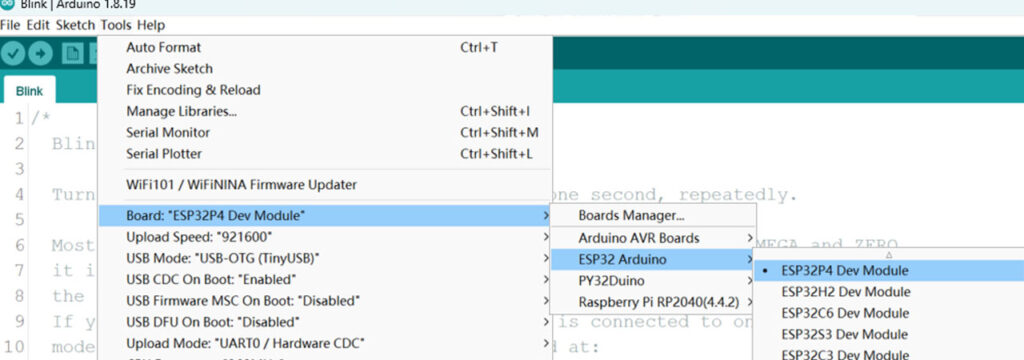
At the time of writing, the FireBeetle 2 ESP32-P4 is offered in two versions. The standalone development board is priced at $11.90 USD, but it is still listed as “coming soon” on the DFRobot store, meaning availability is limited and stock may take some time to appear. For those who need a complete setup, the FireBeetle 2 ESP32-P4 Development Kit, which includes both the dev board and an I/O expansion board, is already in stock and available directly from DFRobot for $13.90 USD. International buyers may also find the board through resellers such as Core Electronics in Australia, where it is priced at AU$18.70. However, depending on stock, orders from these resellers may face longer lead times, with shipping windows stretching from mid-September to early December.
